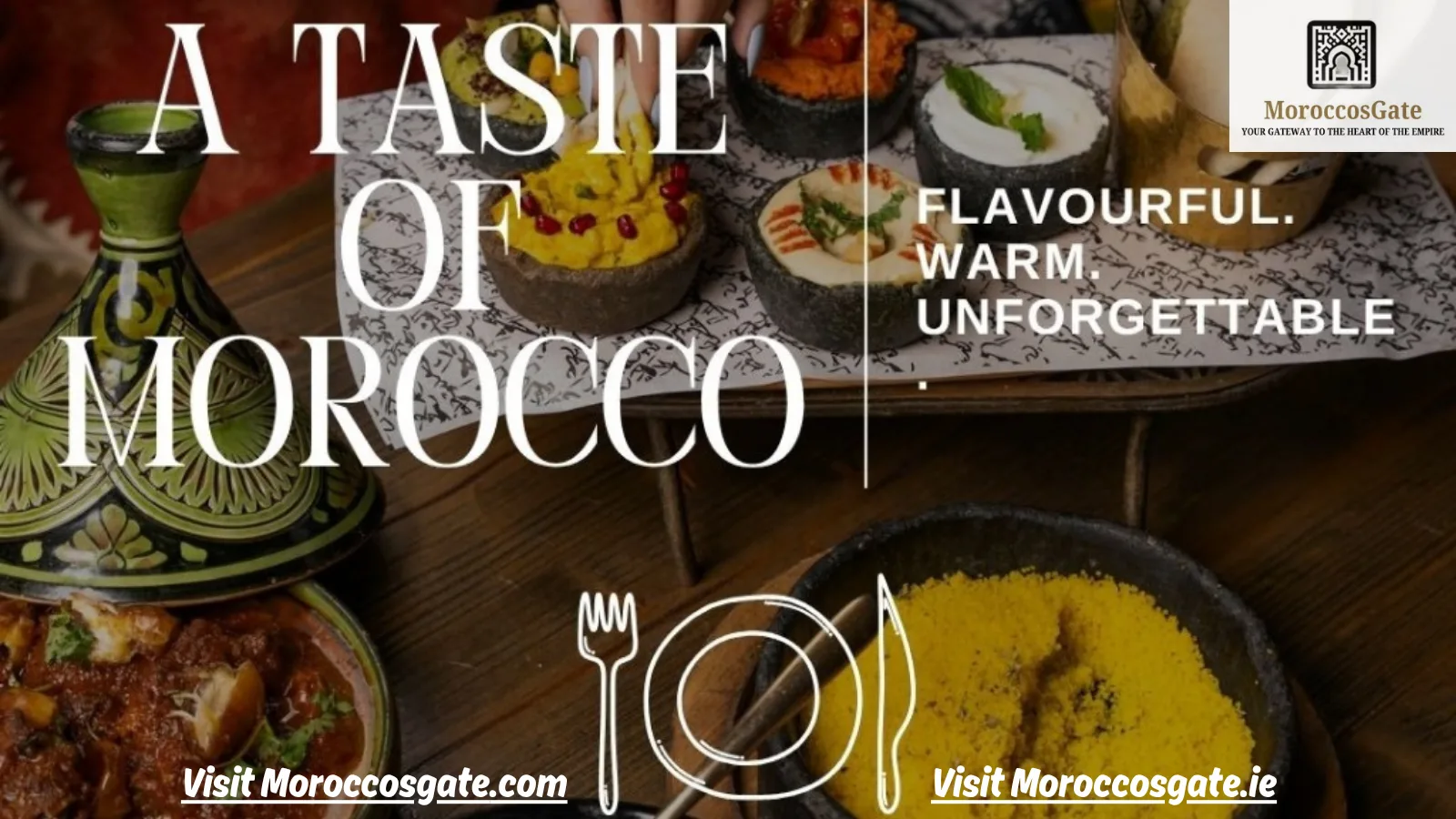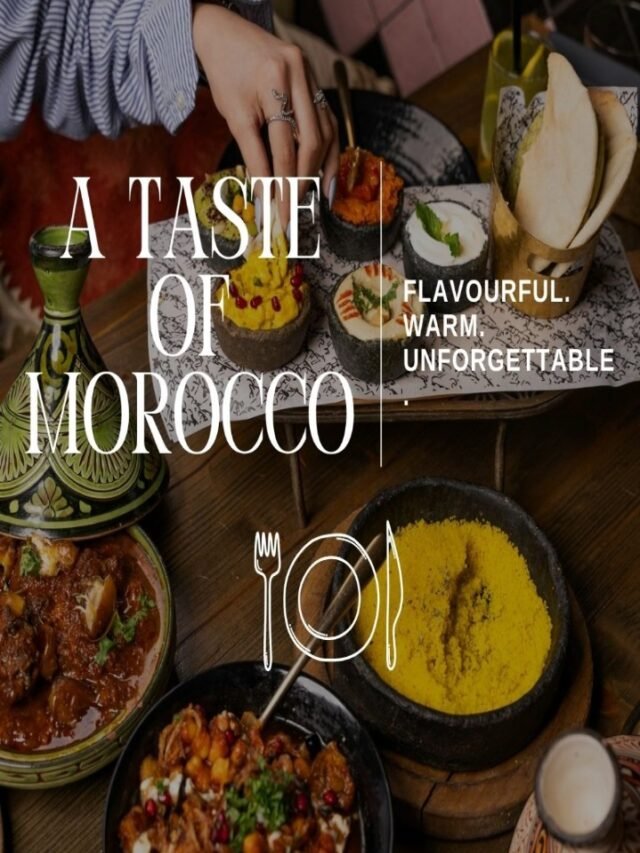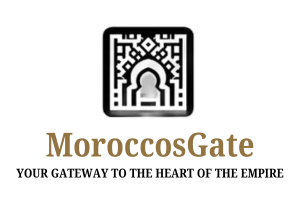Moroccan Culinary Magic
Morocco’s food is a feast for the senses, bursting with vibrant flavours, warm spices, and traditions that tell stories of community and culture. From the smoky aroma of a slow-cooked tagine to the delicate sweetness of chebakia, every dish is a journey into the heart of Moroccan life. In this blog, we’ll explore A Taste of Morocco through its iconic dishes: tagine, couscous, mint tea, harira soup, and chebakia. Whether you’re a foodie or a curious home cook, these recipes and insights will bring Morocco’s culinary heritage to your kitchen.
What Makes Moroccan Cuisine Special?
Moroccan food is a beautiful blend of influences, shaped by centuries of trade and cultural exchange. It’s known for its bold spices like cumin, saffron, and cinnamon, paired with fresh herbs like coriander and parsley. The result? Dishes that are hearty yet balanced, aromatic yet comforting. The keyword A Taste of Morocco captures this essence, inviting you to savour dishes like tagine, a slow-cooked stew, or couscous, a fluffy grain often served with vegetables and meat. Then there’s mint tea, a symbol of hospitality, harira soup, a nourishing Ramadan staple, and chebakia, a honey-soaked pastry that melts in your mouth. These dishes aren’t just food—they’re a celebration of Moroccan life.
The Art of Cooking Tagine
What is Tagine?
A tagine is both a dish and the clay pot it’s cooked in. The conical lid traps steam, keeping the ingredients moist and infusing them with spices. Common tagines include chicken with preserved lemons, lamb with apricots, or vegetable-only versions for a lighter option. The magic of tagine lies in its slow-cooking process, which melds flavours into a rich, comforting stew.
Simple Chicken Tagine Recipe
Let’s bring A Taste of Morocco to your kitchen with a classic chicken tagine. This recipe serves four and takes about 1.5 hours.
Ingredients:
- 4 chicken thighs, bone-in, skin-on
- 2 onions, finely chopped
- 3 garlic cloves, minced
- 1 tsp ground cumin
- 1 tsp ground ginger
- 1 tsp paprika
- 1/2 tsp saffron threads (optional)
- 1 preserved lemon, chopped
- 100g green olives
- 400ml chicken stock
- 2 tbsp olive oil
- Fresh coriander, chopped, for garnish
- Salt and pepper to taste
Method:
- Heat olive oil in a large pan or tagine pot over medium heat. Brown the chicken thighs for 5 minutes on each side, then set aside.
- In the same pan, sauté onions and garlic until soft (about 5 minutes).
- Add cumin, ginger, paprika, and saffron. Stir for 1 minute until fragrant.
- Return the chicken to the pan. Add preserved lemon, olives, and stock. Cover and simmer for 1 hour, stirring occasionally.
- Check seasoning, garnish with coriander, and serve with couscous or flatbread.
Tip: If you don’t have a tagine pot, a heavy-based casserole dish works just as well.
Why Tagine is a Moroccan Staple
The tagine is a cornerstone of Moroccan home cooking because it’s versatile and forgiving. You can swap chicken for lamb, beef, or even fish, and toss in seasonal vegetables like courgettes or carrots. The slow cooking ensures even tough cuts of meat become tender, making it budget-friendly too. For A Taste of Morocco, a tagine is a must-try, offering warmth and depth in every bite.
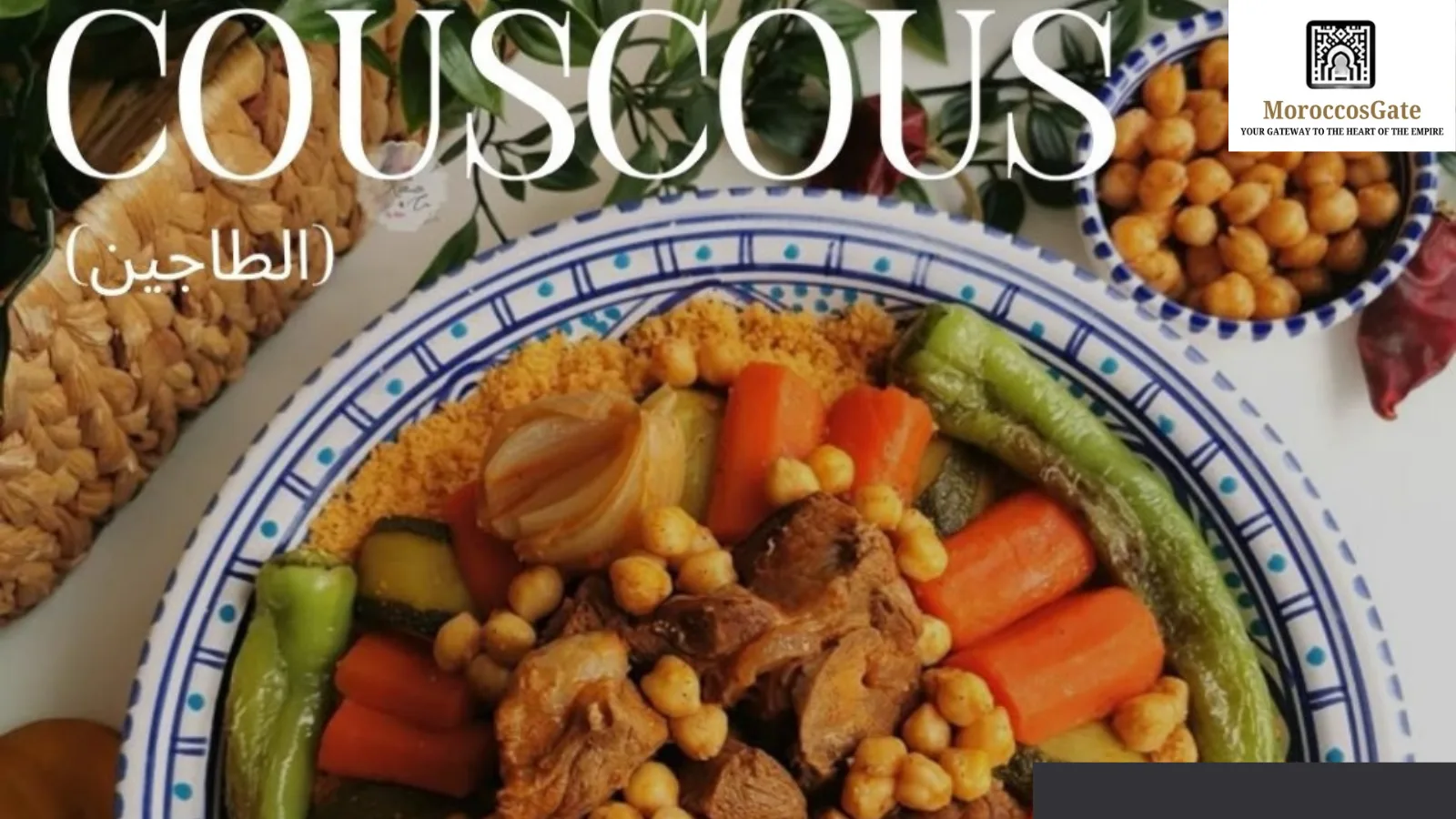
Couscous: The Heart of Moroccan Meals
Understanding Couscous
Couscous is tiny granules of semolina, steamed to fluffy perfection. In Morocco, it’s often served on Fridays, a day for family gatherings. It’s typically paired with a hearty stew of meat and vegetables, but vegetarian versions are just as popular. The light texture of couscous balances the richness of Moroccan stews, making it a perfect partner for tagine or standalone dishes.
Easy Vegetable Couscous Recipe
This vegetable couscous recipe is quick, colourful, and serves four. It’s a great way to experience A Taste of Morocco.
Ingredients:
- 200g couscous
- 1 courgette, sliced
- 1 carrot, sliced
- 1 red pepper, chopped
- 1 onion, chopped
- 400ml vegetable stock
- 1 tsp ground cumin
- 1 tsp ground coriander
- 1/2 tsp cinnamon
- 2 tbsp olive oil
- Handful of raisins
- Fresh parsley, chopped
- Salt to taste
Method:
- Heat olive oil in a large pan. Add onion and cook until soft (about 5 minutes).
- Add cumin, coriander, and cinnamon. Stir for 1 minute.
- Add courgette, carrot, and red pepper. Cook for 10 minutes until slightly tender.
- Pour in stock and raisins. Simmer for 15 minutes.
- Meanwhile, place couscous in a bowl. Pour 300ml boiling water over it, cover, and let sit for 5 minutes. Fluff with a fork.
- Serve the vegetables and broth over the couscous, garnished with parsley.
Tip: For extra flavour, toast the couscous in a dry pan before steaming.
Couscous in Moroccan Culture
In Morocco, couscous is more than food—it’s a ritual. Families gather around a shared dish, often eating with their hands, which fosters a sense of togetherness. For A Taste of Morocco, mastering couscous is key to understanding the country’s communal spirit.
Mint Tea: Morocco’s Drink of Hospitality
The Ritual of Mint Tea
Mint tea, known as “Moroccan whisky,” is the heartbeat of Moroccan hospitality. Served in small, ornate glasses, it’s sweet, refreshing, and poured from a height to create a frothy top. Whether at a market stall or a family home, mint tea is offered to guests as a warm welcome. It’s a simple drink with a big cultural role, embodying A Taste of Morocco.
How to Make Authentic Mint Tea
This mint tea recipe serves four and takes just 10 minutes.
Ingredients:
- 1 tbsp green tea leaves (gunpowder tea works best)
- Handful of fresh mint leaves
- 4 tbsp sugar (adjust to taste)
- 1 litre boiling water
Method:
- Rinse a teapot with hot water to warm it.
- Add green tea leaves and a splash of boiling water. Swirl and discard the water (this removes bitterness).
- Add mint leaves and sugar to the teapot. Pour in 1 litre of boiling water.
- Let steep for 5 minutes, then stir gently.
- Pour into small glasses from a height to aerate the tea.
Tip: Use fresh mint for the best flavour, and don’t skimp on the sugar—it’s meant to be sweet!
Why Mint Tea Matters
Mint tea isn’t just a drink; it’s a social glue. In Morocco, refusing a glass is almost rude, as it’s a gesture of friendship. The act of pouring, often theatrical, is part of the experience. For A Taste of Morocco, sipping mint tea connects you to centuries of tradition.
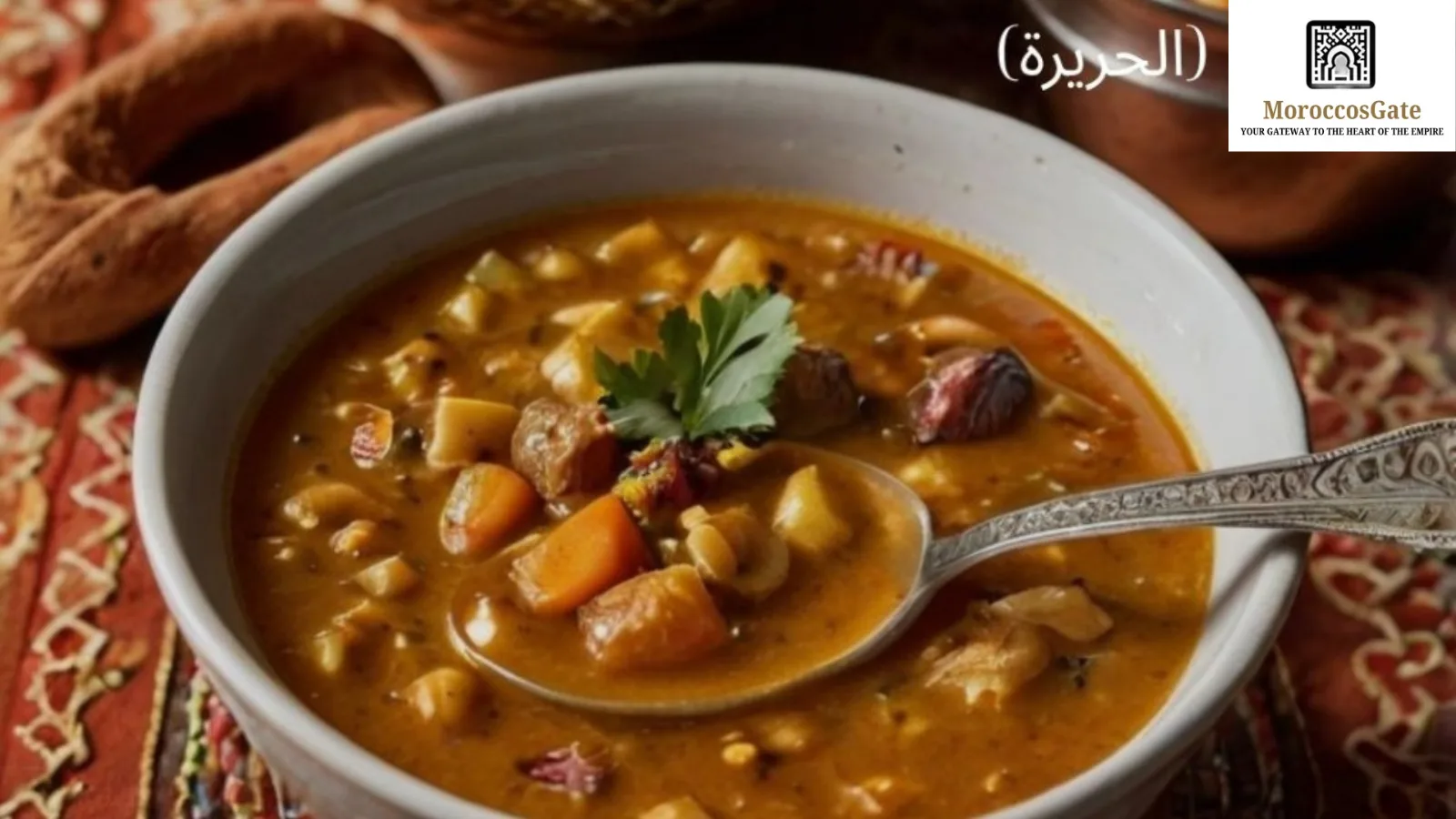
Harira Soup: Comfort in a Bowl
What is Harira Soup?
Harira soup is a rich, tomato-based soup packed with lentils, chickpeas, and spices. It’s a Ramadan favourite, served to break the fast, but it’s also a year-round comfort food. The soup’s hearty texture and warming flavours make it a beloved dish for A Taste of Morocco.
Classic Harira Soup Recipe
This harira soup recipe serves six and takes about 1 hour.
Ingredients:
- 100g red lentils
- 1 can (400g) chickpeas, drained
- 1 onion, chopped
- 2 celery sticks, chopped
- 400g canned tomatoes
- 1 tbsp tomato purée
- 1 tsp ground cinnamon
- 1 tsp ground ginger
- 1 tsp ground turmeric
- 1.5 litres vegetable stock
- 50g vermicelli noodles
- 2 tbsp olive oil
- Fresh coriander, chopped
- Lemon wedges for serving
- Salt and pepper to taste
Method:
- Heat olive oil in a large pot. Sauté onion and celery until soft (about 5 minutes).
- Add cinnamon, ginger, and turmeric. Stir for 1 minute.
- Add lentils, chickpeas, tomatoes, tomato purée, and stock. Bring to a boil, then simmer for 40 minutes.
- Add vermicelli and cook for 5 more minutes until tender.
- Season, garnish with coriander, and serve with lemon wedges.
Tip: For a meaty version, add diced lamb or beef at the start and simmer until tender.
Harira’s Role in Moroccan Life
Harira soup is a staple during Ramadan, offering nourishment after a day of fasting. Its versatility—vegetarian or meaty—makes it a crowd-pleaser. For A Taste of Morocco, harira soup is a bowl of warmth that reflects the country’s love for wholesome, shared meals.
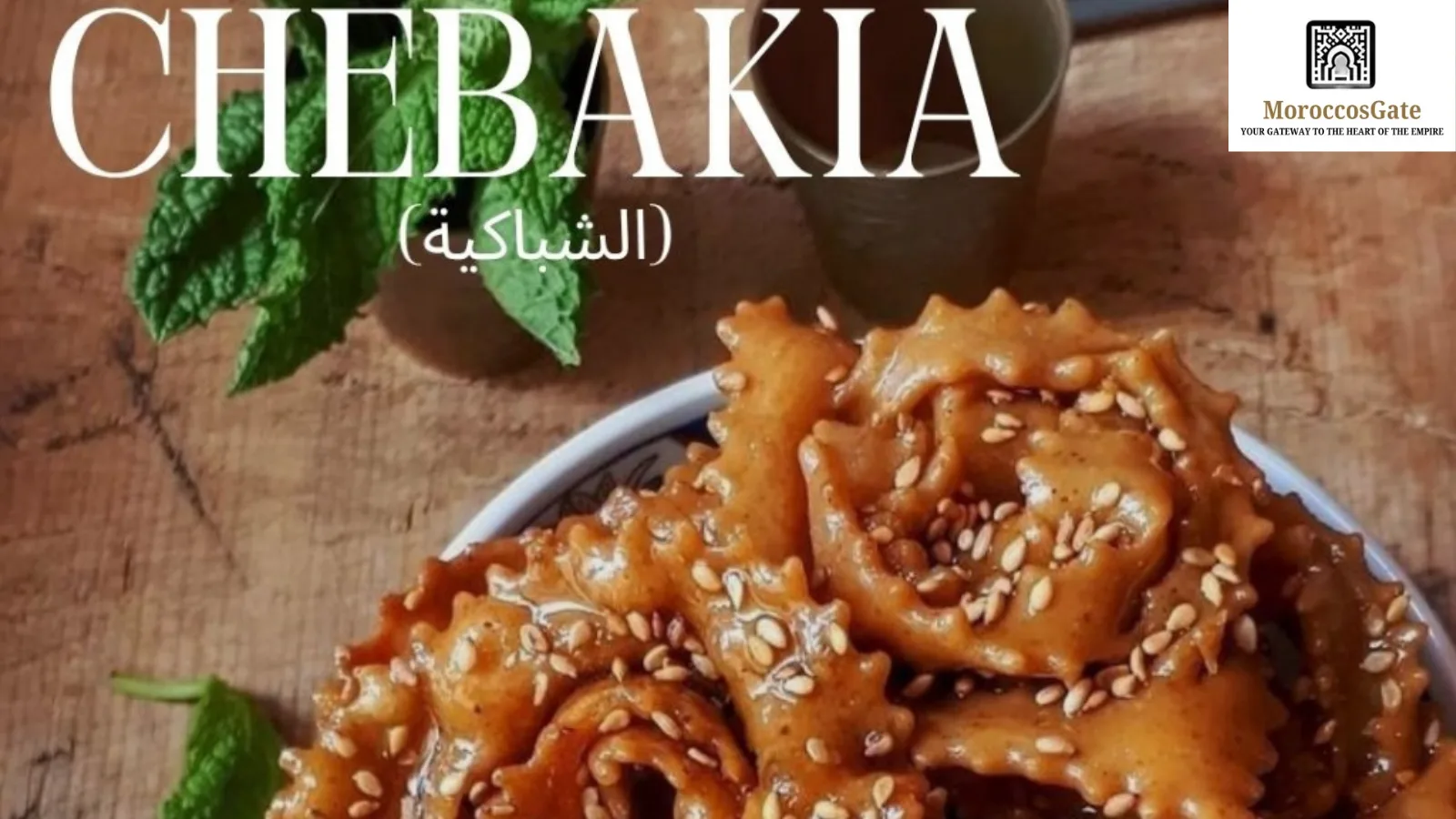
Chebakia: Morocco’s Sweet Delight
Discovering Chebakia
Chebakia is a sesame-seed pastry, deep-fried and soaked in honey, often shaped into intricate flower-like patterns. It’s a Ramadan treat but enjoyed year-round, especially with mint tea. Its sticky sweetness and nutty crunch make it a standout in A Taste of Morocco.
Homemade Chebakia Recipe
This chebakia recipe makes about 20 pieces and takes 1 hour.
Ingredients:
- 300g plain flour
- 50g ground almonds
- 1 tsp sesame seeds, toasted
- 1 tsp aniseed
- 1 tsp cinnamon
- 1/2 tsp baking powder
- 1 egg
- 50ml vegetable oil
- 50ml orange blossom water
- 100ml warm water
- 200g honey
- Oil for frying
- Extra sesame seeds for sprinkling
Method:
- Mix flour, ground almonds, sesame seeds, aniseed, cinnamon, and baking powder in a bowl.
- In another bowl, whisk egg, oil, and orange blossom water. Add to the dry mix with enough warm water to form a dough.
- Knead for 5 minutes until smooth. Divide into 4 balls.
- Roll each ball into a thin sheet. Cut into rectangles, make 4 slits in each, and fold to create a flower shape.
- Heat oil in a deep pan. Fry chebakia until golden (about 2 minutes per side).
- Warm honey in a pan. Dip fried chebakia in honey, then sprinkle with sesame seeds.
- Let cool before serving.
Tip: Store chebakia in an airtight container to keep it crispy.
Chebakia’s Cultural Significance
Chebakia is a labour of love, often made in large batches for celebrations. Its intricate design reflects Moroccan artistry, and its sweetness pairs perfectly with mint tea. For A Taste of Morocco, chebakia is a treat that brings joy to any occasion.
Bringing It All Together: A Moroccan Feast
Imagine hosting a Moroccan-themed dinner with all five dishes: a fragrant tagine, fluffy couscous, steaming harira soup, sweet chebakia, and refreshing mint tea. Start with harira soup as a starter, followed by tagine and couscous as the main course. Serve chebakia for dessert, paired with mint tea poured from a height for that authentic touch. This spread captures A Taste of Morocco, blending savoury, sweet, and aromatic elements into a memorable meal.
Tips for Hosting a Moroccan Night
- Set the Scene: Use colourful tableware, lanterns, and cushions to create a Moroccan vibe.
- Serve Family-Style: Place dishes in the centre for guests to share, mimicking Moroccan traditions.
- Play Music: Soft oud or gnawa music in the background enhances the atmosphere.
- Offer Seconds: Moroccans love generous hospitality, so keep the tagine and couscous flowing.
Exploring Moroccan Ingredients
To truly capture A Taste of Morocco, stock your pantry with these essentials:
- Spices: Cumin, cinnamon, ginger, turmeric, and saffron are non-negotiable.
- Preserved Lemons: These add a tangy depth to tagine.
- Orange Blossom Water: A must for chebakia and some desserts.
- Lentils and Chickpeas: Perfect for harira soup and other stews.
- Fresh Herbs: Coriander, parsley, and mint (for mint tea) are widely used.
You can find these at most UK supermarkets or Middle Eastern grocers. Online retailers like Sous Chef also stock authentic ingredients.
Moroccan Food Beyond the Plate
Moroccan cuisine is deeply tied to its culture. Cooking is a communal act, often done by women in large households, with recipes passed down through generations. Meals are a time for connection, whether during Ramadan or casual family dinners. Tagine, couscous, mint tea, harira soup, and chebakia aren’t just dishes—they’re expressions of love, hospitality, and heritage. By cooking these, you’re not just eating; you’re stepping into a rich cultural tapestry.
FAQs About Moroccan Cuisine
What’s the best way to serve couscous?
Fluff it with a fork and top with stew, ensuring every bite soaks up the broth.
Can I make tagine without a tagine pot?
Yes, a heavy-based casserole dish or Dutch oven works perfectly.
Is harira soup only for Ramadan?
No, it’s enjoyed year-round, but it’s especially popular during Ramadan.
How do I store chebakia?
Keep it in an airtight container for up to two weeks to maintain crispness.
Why is mint tea so sweet?
The sweetness reflects Moroccan hospitality, making it a warm gesture to guests.
Savour A Taste of Morocco
From the tender, spiced depths of tagine to the sticky sweetness of chebakia, Moroccan cuisine is a love letter to flavour and tradition. Couscous brings comfort, harira soup warms the soul, and mint tea ties it all together with its refreshing simplicity. Try these recipes, share them with loved ones, and let the aromas of Morocco fill your home. Ready to cook? Grab your spices and start your culinary journey today!
For more offers Click Here!

